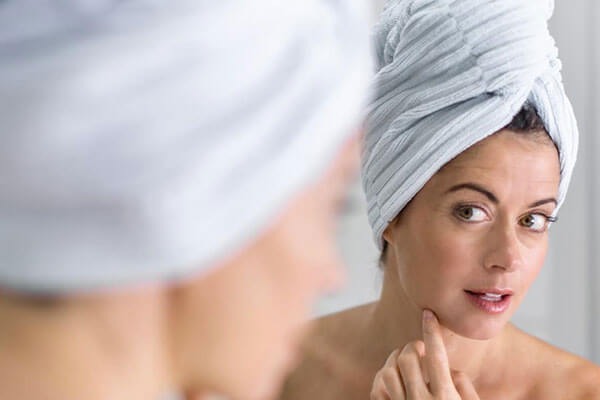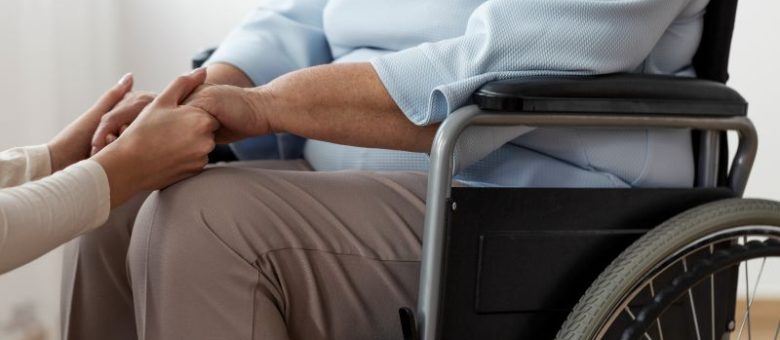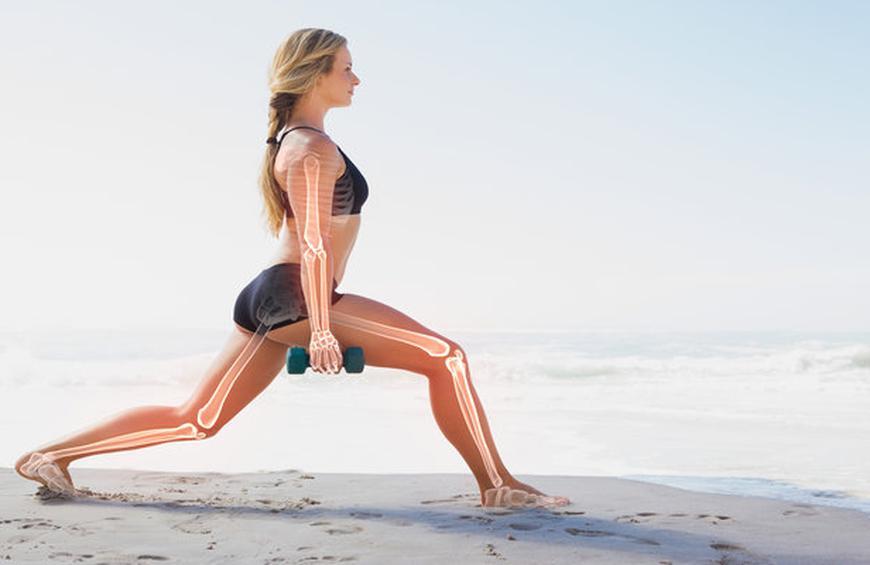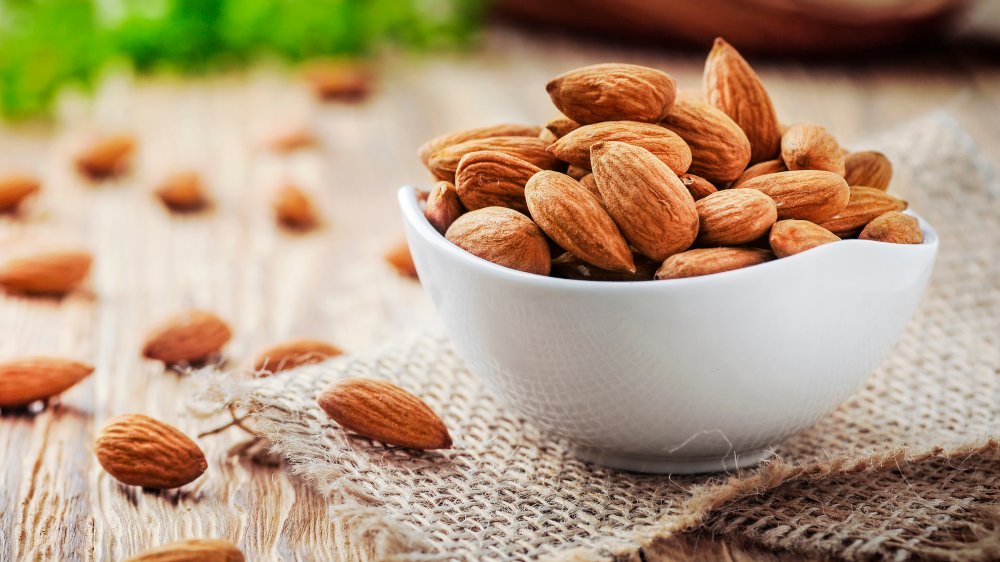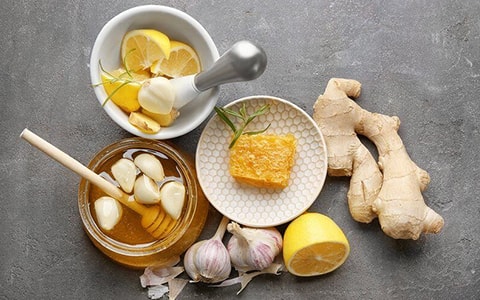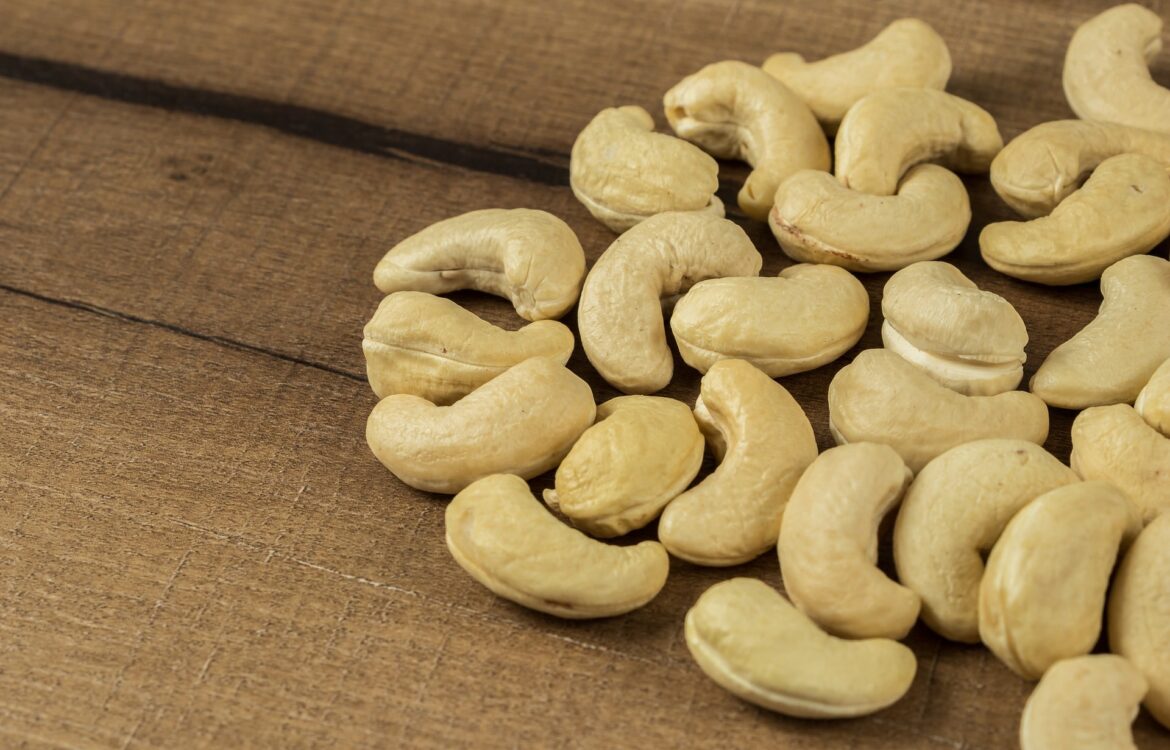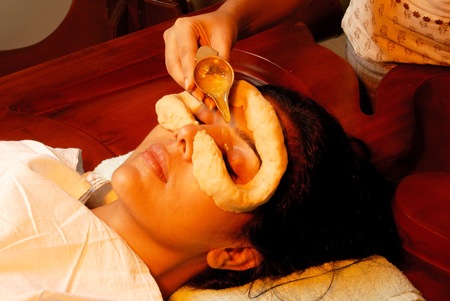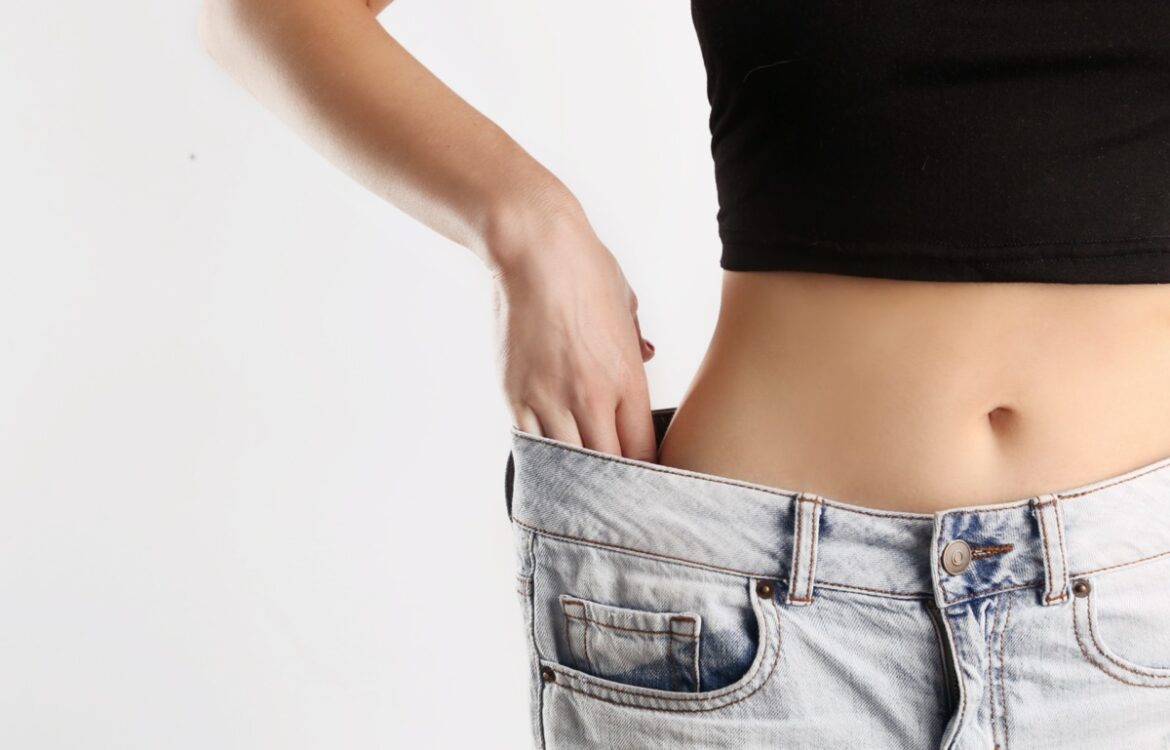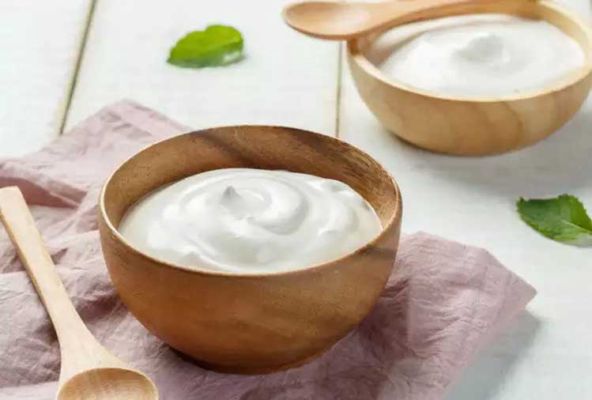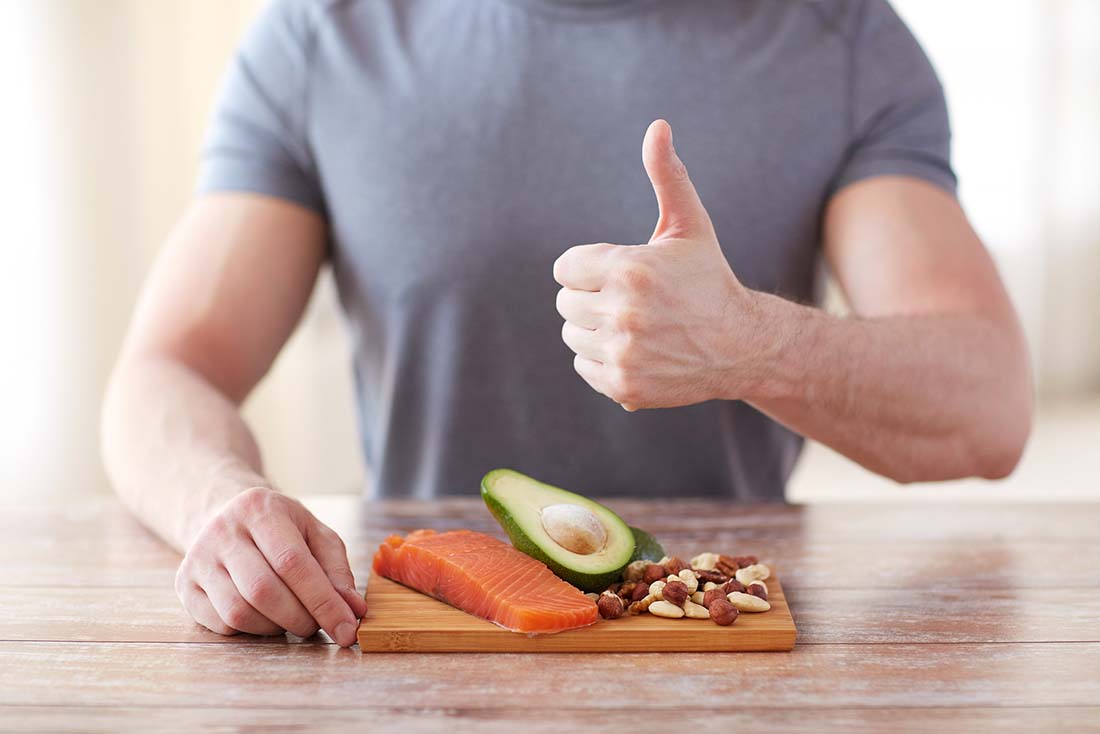Author Archives: Dr. Vaidya Karanvir Singh
HORMONAL IMBALANCE
- April 15, 2021
- Posted by Dr. Vaidya Karanvir Singh
- 0 Comment(s)
DESCRIPTION
- Hormonal imbalances occur when there is too much or too little hormone present in the bloodstream.
- Hormones have an essential role in the body, even small hormonal imbalances can cause side effects throughout the body.
- These hormones are produced by glands present in the endocrine system.
- Hormones travel through the bloodstream to the tissues and organs, pass the messages that tell the organs what to do and when to do it.
- These are important to regulating bodily processes, so little imbalance in hormones can affect a wide range of bodily functions.
Hormones help to regulate:
- Metabolism and appetite
- Heart rate
- Sleep cycles
- Reproductive cycles and sexual function
- General growth and development
- Mood and stress levels
- Body temperature
- Men and women can be affected by the imbalances of insulin, growth hormones, steroids and adrenaline.
- Women experience imbalances in estrogen and progesterone levels, while men experience imbalances in testosterone levels.
Signs or symptoms of a hormonal imbalance
- Common hormonal conditions that affecting both men and women could cause any of the following signs or symptoms:
- Weight gain
- A hump of fat between the shoulders
- Unexplained, and sudden weight loss,
- Fatigue
- Muscle weakness,
- Muscle aches, tenderness, and stiffness,
- Pain, stiffness, or swelling in your joints,
- Increased or decreased heart rate
- Sweating
- Increased sensitivity to cold or heat,
- Constipation or more frequents bowel movements,
- Frequent urination,
- Increased hunger,
- Decreased sex drive,
- Depression,
- Nervousness, anxiety, or irritability,
- Blurred vision,
- Infertility,
- Thinning of hairs, brittle hair,
- Dry skin,
- Puffy face,
- Rounded face,
- Purple or pink stretch marks
- Keep in mind that these symptoms are nonspecific, and having them doesn’t necessarily mean that you have a hormonal imbalance.
Signs and symptoms in females
- For females of reproductive age, the most common hormonal imbalance seen is polycystic ovarian disorder.
- The normal hormonal cycle also changes during puberty, pregnancy, breastfeeding, and menopause.
Symptoms of a hormonal imbalance include:
- Heavy or irregular periods, including missed periods, stop periods, or frequent periods.
- Hirsutism or excessive hair on the face, chin, or other parts of the body
- Acne on the face, chest, or upper back
- Hair loss
- Darkening of the skin along neck creases, groin, and underneath of breasts
- Skin tags
- Vaginal dryness
- Vaginal atrophy
- Pain during sex
- Night sweats
- Headaches
Signs or symptoms in males
- Testosterone plays an important role in male development. If not producing enough testosterone, it can cause a variety of symptoms.
- Gynecomastia
- Breast tenderness
- Erectile dysfunction
- Decrease in beard growth and body hair growth
- Loss of muscle mass
- Loss of bone mass, otherwise known as osteoporosis
- Difficulty concentrating
- Hot flashes
Signs or symptoms in children
- Both girls and boys producing sex hormones during puberty.
- Many children with delayed puberty will go on to experience normal puberty, but some man’s and women’s production of testosterone and estrogen are inhibited such a condition is known as hypogonadism.
Boys with hypogonadism may experience:
- Lack of muscle mass development
- A voice that doesn’t deepen
- Body hair that grows sparsely
- Impaired penis and testicular growth
- Gynecomastia
For girls with hypogonadism:
- Menstruation doesn’t begin
- Breast tissue doesn’t develop
- The growth rate doesn’t increase
Causes of a hormonal imbalance
- There are many causes for hormonal imbalance. Causes are different depending on which hormones or glands are affected. Common causes of hormonal imbalance include:
- Hormone therapy
- Medications
- Cancer treatments such as chemotherapy
- Tumors, whether cancerous or benign
- Pituitary tumors
- Eating disorders
- Stress
- Injury or trauma
- The conditions can also lead to further hormonal imbalances:
- Diabetes type 1 or type 2
- Diabetes insipidus
- Hypothyroidism
- Hyperthyroidism
- Hyper functioning thyroid nodules
- Thyroiditis
- Hypogonadism
- Cushion syndrome or high levels of cortisol
- Congenital adrenal hyperplasia causes low levels of cortisol and aldosterone
- Addison’s disease
HOW CAN BALANCE THESE HORMONES NATURALLY
Get enough sleep
- Sleep is the most important factor for hormonal balance. Some hormone levels may rise and fall throughout the day in response to issues such as the quality of sleep.
- The adverse effects of sleep disturbance on hormones may contribute to:
- Obesity
- Diabetes
- Problems with appetite
- Regularly getting a full 6- 8 sleep, undisturbed sleep, and night rest may help the body to regulate hormone levels.
Avoid too much light at night
- Exposure to blue light, such as from cell phones or computer screens, can interrupt the sleep cycle.
- Study shows that exposure to any bright artificial lighting at night may confuse the body, causing it to suppress the hormone melatonin, which can negatively affect many functions.
- Avoiding artificial lights may help to regulate hormones and restore a natural body’s clock.
Manage stress
- There is a link between stress, the endocrine system, and hormone levels.
- Stress leads to an increase in adrenaline and cortisol hormones.
- If levels of these hormones are too high, it can impair the overall balance and contribute to factors such as obesity, changes in mood, and cardiovascular issues.
- It is important to find ways to reduce stress simply by listening to music reduces stress, especially if the person is intending to relax.
Exercise
- Regular exercise may prevent overeating and hormonal imbalance. A study shows that short exercise sessions regulate hormones that control appetite.
Avoid sugars
- Sugar plays a role in issues such as metabolic disease and insulin resistance. Avoid sugar from the diet helps to keeps the hormone in level including insulin.
Eat lots of fiber
- Fiber plays an important role in gut health and regulates hormones such as insulin.
Paralysis (Pakshaghata)
- April 15, 2021
- Posted by Dr. Vaidya Karanvir Singh
- 0 Comment(s)
Paralysis is the deficiency of muscle work in piece of your body. It happens when something turns out badly with the manner in which messages pass between your cerebrum and muscles. Loss of motion can be finished or fractional. It can happen on one or the two sides of your body. It can likewise happen in only one region, or it very well may be boundless. Loss of motion of the lower half of your body, including the two legs, is called paraplegia. Loss of motion of the arms and legs is quadriplegia.
Pakshaghata is a Vatavyadhi and enormous number of populace influenced by sickness universally and older matured people groups are more vulnerable than more youthful one. Different etiological factors, for example, Virudha Aahara, Atijagarana, Ati Vyavaya, Asruk srava, Vichesta, Dhatu kshya, Shoka, Chinta, Diwaswapna, Marmabhighata and Vegasandharana starts pathogenesis of Pakshaghata.
Types of Paralysis
Complete paralysis: the point at which you can’t move or control your deadened muscles by any means. You additionally will be unable to feel anything in those muscles.
Partial or inadequate paralysis: is the point at which you actually make them feel in, and perhaps power over, your incapacitated muscles. This is once in a while called paresis
Localized paralysis: influences only one explicit region, similar to your face, hands, feet, or vocal ropes.
Generlized paralysis: is more boundless in your body and is assembled by the amount of your body is influenced. The sort ordinarily relies upon where your mind or spinal rope is harmed.
- Monoplegia is a sort of summed up loss of motion that influences only one appendage.
- Diplegia influences similar territory on the two sides, as the two arms, the two legs, or the two sides of your face.
- Hemiplegia influences only one side of your body and is generally brought about by a stroke, which harms one side of your cerebrum.
- Quadriplegia (or tetraplegia) is the point at which each of the four appendages is deadened, at times alongside specific organs.
- Paraplegia is paralysis starting from the waist.
Causes of Paralysis
- Bell’s paralysis (brought about by a swollen or excited nerve that controls the facial muscles)
- Cerebral paralysis
- Different sclerosis (illness that influences the mind and spinal string causing shortcoming, coordination and equilibrium challenges, and different issues)
- Solid dystrophy (acquired turmoil that causes a reformist loss of muscle tissue and muscle shortcoming)
- Fringe neuropathy (jumble that causes brokenness of nerves that lie outside the cerebrum and spinal string)
- Broken or cut off spinal rope
- Direct injury to a nerve, like brachial plexus injury, discharge or cut injury, crack, or separation with nerve harm
- Electrical injury
- Herniated vertebral circle
- Toxic substances, for example, botulinum or snake toxin
- Radiation
- Poisons like mercury, lead or arsenic
Symptoms of Paralysis
- Deadness or agony in the influenced muscles
- Muscle shortcoming
- Obvious indications of muscle misfortune (muscle decay)
- Solidness
- Compulsory fits or jerks
Management of Paralysis
Internal treatment:
Not all interior meds of ayurveda for Pakshaghat are appropriate for patients. In view of the different dosha levels and presence of illnesses like hypertension or high serum cholesterol, prescriptions are changed to show up at the ideal treatment plan. These drugs are wealthy in cancer prevention agents and subsequently they are controlled to improve the accessibility of oxygen in mind and in this manner resuscitate the torpid cells. Medications are generally made out of yet not limited to:
Bala – Country Mallow
Ashwagandha – Winter Cherry
Radish oil
External treatment:
For better outcomes, ayurveda consistently utilizes plenty of outer medicines alongside interior prescriptions. The outside medicines are conceived to such an extent that they are advantageous for easing the firmness in solid framework and furthermore for animating the inner organs to adjust doshas.
Oil kneads: Tailas (oils) like Mahamasha, dhanwantaram, and ksheerabala are widely used to fortify the strong framework and lessen the pressure related with it.
Panchakarma treatment: Panchakarma treatments are successful in delivering huge advantages while treating loss of motion.
Basti – Considered as the mother of all panchakarma medicines, it purifies the aggravations in dosha levels
Nasya – Administration of sedated oils through nostrils
Oil application and kneading specific pieces of the body additionally yields results for patients who don’t have over abundance level of kapha dosha.
Shiro Abhyanga – use of oil in head
Sharera Abhyanga – use of oil in full body
Pada abhyanga – use of oil in lower appendages
Diet and Lifestyle in Paralysis
- Stay away from unnecessary utilization of zesty, astringent and additionally pungent, sleek/greasy food and incongruent eating routine, Bengal gram, peas, potato, and so forth
- Utilize dark gram, horse gram, onion, garlic, ginger, radish, debris gourd, green gram and so forth in ordinary eating regimen.
- Use organic products like pomegranate, grape or papaya.
- Devour low fat and a high strands diet as exhorted by the doctor.
- Control the treatable danger factors like Diabetes mellitus, hypertension, heart infections.
- Practice standard activities or physiotherapy.
- Stay away from inordinate starvation, abundance works out, smothering of normal inclinations.
- Stay away from liquor utilization, smoking.
- Stay away from end of any ordinary prescription without clinical guidance.
- Be dynamic and ideal utilization of influenced part and Continue practices as proposed by the doctor
Simple ways to strengthen bones
- April 15, 2021
- Posted by Dr. Vaidya Karanvir Singh
- 0 Comment(s)
Keep Moving
- People with arthritis fear it will increase pain or lead to further damage to their joints if they keep doing regular physical activity. Our joints allow for movement when the body is not resisting exercising.
- Movement of joints reduces pain, joint stiffness, strengthens the muscles which surround the joints. It helps us maintain a healthy weight. The effects are true, so keep moving!
Protect Your Joints
- It is very crucial for everyone, especially people with osteoporosis and arthritis, to look after their joints. The main aim of joint-protection foundations is to reduce pain and decrease the strain or load placed on the joints.
Maintain Your Ideal Weight
- We need to maintain our optimal body weight, concerning ideal joint health. Carrying surplus bodyweight adds strain to our joints, especially the weight-bearing joints like knee joint and ankle joint.
- Researchers have found that weight loss effectively decreases knee pain and stiffness in muscles associated with knee osteoarthritis.1
Do Low-Impact Exercises
- A gentle type of exercise/workout that minimizes the strain put on joints during highly intense workouts. The significant benefits of regular physical activity and yoga can be achieved with low-impact exercise.
- According to the Ayurvedic doctors, low-impact exercises that are easier on your joints include aquatic sports like swimming, social sports like golf, as well as brisk walking and cycling.
Eat an Anti-Inflammatory Diet
- Reducing inflammation is part of managing arthritis disorder under control and improving overall joint health.
- An anti-inflammatory diet means including food items that decrease inflammation and avoiding foods that increase inflammation.
- According to some sources, a Mediterranean diet is a good option for keeping inflammation (due to arthritis) under control.
Strengthen Your Muscles
- The muscles that assist our joints must be kept as powerful and healthy as possible. Maintaining or improving your muscle strength can be done with the help of strengthening exercises.
- Weight training can be generally used as part of a strengthening systematic regime. Be careful while doing your workouts and not overdo it.
- With proper exercise and training, you will increase the strength of your joints, while decreasing pain.
Try Range-of-Motion Exercises
- Bone and joints disorders are characteristically associated with limited series of motion.
- To maintain your current series of motion or to improve it, you should regularly put each joint through its entire range of motion.
- Flexion, Extension, or rotation of each of your joints. Range of motion exercises improve endurance, flexibility, decrease stiffness and pain, and help keep our joints properly functional.
Stop Smoking
- Most people are unaware of the fact that smoking enhances the risk of osteoporosis (porous bones) and bone fractures.
- Smoking also increases the risk of injuries involving bursitis (inflammation of bursae of synovial fluid) or tendonitis.
- Smokers also have a higher risk of getting diagnosed with rheumatoid Arthritis and lower backache. Restraint of smoking helps in improving bone density.
Diet
Bone Broth
- Glucosamine sulfate, chondroitin, and amino acids are well documented and suggested to help maintain healthy bones and joints, while calcium is required for bone density.
- Bone broth has all of these ingredients. The substance (like gelatin) that comes from cooking bones imitates collagen that is present naturally in our joints, ligaments, and tendons.
- It is a fiercely debated topic in the medical field whether bone broth can stimulate the re-growth of cartilage or not. It has been known to reduce joint pain and maintain optimal function for people with arthritis when taken regularly as an oral supplement.
- Bone broth can be used in recipes as a cooking base or consumed as a hot broth. You can get tips on bone broth recipes from Ayurvedic dietitians.
Lentils and Beans
- Beans and lentils are well known for their health advantages. Beans and lentils are an excellent source of trace minerals, protein, and fiber.
- They also have excellent antioxidant and anti-inflammatory properties. Anthocyanins are wonderful flavonoid that reduces inflammation.
- Black beans, pinto beans, lentils, chickpeas, and soybeans are all great sources of anthocyanins.
Olive Oil
- Avoid peanut oil, vegetable oil, and sunflower oil as all of these can increase inflammation. Opt for a few tablespoons of olive oil for cooking and making salad dressings rather than above mentioned oils.
- It is better to use the extra virgin variety of oil that is least processed. It is also a good source of Omega 3 fatty acid and is an unsaturated “healthy” fat.
Nuts and Seeds
- For vegans and vegetarians among us, Omega 3 fatty acid can also be found in a wide range of nuts and seeds. A small daily portion of walnuts, sunflower seeds, almonds, flax seeds, chia seeds can be significantly effective in reducing inflammation in the joints and connective tissue.
Omega-3 Fatty Acids / Fish Oils
- Omega 3 fatty acids are found in an enormous amount in cold water fishes, which are essential nutrients for overall human health.
- These crucial nutrients are also sometimes referred to as polyunsaturated fatty acids.
- They not only improve brain function and lower the risk of heart disease, diabetes, and other illnesses, as well as proven to reduce inflammatory factors in the body.
- Taking a daily fish oil supplement is another way to absorb Omega-3s. It can be found in cold-water fishes like sardines, trout, tuna, salmon, and halibut.
Garlic and Root Vegetables
- Food items having anti-inflammatory properties are garlic, onion, turmeric, and ginger.
- Various research studies have proven that these pungent vegetables are beneficial in treating symptoms of arthritis, osteoporosis, and other joint pain.
- You can add these vegetables to meals for added flavor. They’re all available in form of a supplement as well.
ALMONDS BENEFITS
- April 15, 2021
- Posted by Dr. Vaidya Karanvir Singh
- 0 Comment(s)
DESCRIPTION
- Almonds are the most popular nuts. Almonds are famous for their versatility and health benefits.
- Almonds are good for heart health, diabetes, and weight management.
- Almonds are rich in plant-based protein, fiber, and monounsaturated fats, vitamin E, and magnesium help to make them a heart-healthy snack.
Nutrition facts
- Almonds
- Serving size: 28 g
- Calories: 164
- Total fat ————————14.2 g
- Carbohydrate —————6.11 g
- Fibers—————————3.54 g
- Sugars————————–1.23 g
- Calcium————————76.3 mg
- Iron—————————–1.05 mg
- Magnesium——————-76.5 g
- Potassium———————208mg
- Vitamin – E——————-7.27
- Riboflavin———————0.323mg
BENEFITS
Almonds Reduce Cholesterol:
- Consuming almonds increase the levels of Vitamin E in red blood cells and also reduces the risks of having cholesterol.
- By boosting the levels of vitamin E in your bloodstream antioxidants are formed that prevents cells from clogging developing cholesterol.
- Thus consuming a handful of almonds daily can generate more vitamin E into your bloodstream and save you from the risk of developing cholesterol.
Almonds are good for the Heart:
- When almonds are consumed along with some other nuts, it is said that it is good for your heart.
- Well, almonds are rich in antioxidants and helped to reduce blood pressure and improved the flow of blood to various parts of the body.
Almonds Regulate Blood Sugar:
- Almonds regulate blood sugar levels and stabilize them because almonds rich in magnesium, and magnesium intake may reduce a person’s risk of developing type 2 diabetes.
Almonds have High Vitamin E:
- Almonds contain higher levels of Vitamin E which is an antioxidant, protects cells from getting toxic.
- With higher amounts of vitamin E being pumped into your bloodstream, this reduces your risks of developing Alzheimer’s disease cancer, and heart disease.
Almonds Reduces Weight:
- Almonds have higher contents of protein and fiber and lower levels of carbohydrates that control appetite and fulfill the stomach for a long time and help in reducing weight.
- Almonds reduce the number of calories on a daily basis.
Almonds are good for the Eyes:
- While carrots are said to be very good for your eyes, almonds have a high source of vitamin E that protects your eyes and prevents abnormal changes in the lens.
- Thus, consuming almonds will protect the eyes. Do not consume almonds in excess this can lead to weight gain.
Almonds have a Rich Source of Antioxidants:
- Almonds have a rich source of antioxidants and protect against stress.
- Stress leads to molecule damage results in inflammation, cancer, and aging.
- The antioxidants present in almonds keeps skin healthy.
- Consuming 84 grams of almonds per day can increase the levels of antioxidants in your body that will protect the person from aging and various other diseases.
Almond Nourishes Skin:
- Almonds contain flavonoids that also present in green tea and broccoli.
- This component nourishes the skin and has anti-aging properties for your skin.
Almonds Prevent Cancer:
- Almonds contain certain amounts of fiber that help in detoxifying the body.
- Consuming almonds helps food to move through the digestive system easily.
- Almonds contain high-fiber content and reduce the risk of developing colon cancer.
- Almonds are also rich in vitamin E and flavonoids that regulate breast cancer.
Almonds Improve Your Brain Power:
- L- carnitine, and riboflavin present in the almonds that help in the growth of brain cells.
- One major chemical that helps the brain in cognitive function.
- Consuming almonds every morning can help to boost your brainpower.
Almonds are best for Treating Anemia:
- Anemia usually occurs when the red blood cells carry very less oxygen to the brain.
- Thus, almonds contain iron, copper, and vitamins that producing more hemoglobin in the bloodstream and prevent anemia.
Almonds are good for Your Nerves:
- Almonds contain magnesium that is good for the nervous system, developing a healthy metabolic rate, and also helps in better bone tissue.
Almonds Treat Acne and Blackheads:
- Almonds help to prevent and fight acne, blackheads, and whiteheads through the fatty acids found in it.
- These fatty acids help to control the oil that clogged in the skin pores. Thus the almond oil help in reducing skin rashes.
Almonds Treat Stretch Marks:
- Almond oil treating stretch marks by nourishing the skin and preventing skin tear.
- Heat the almond oil and apply it to the stretch marks and leave for an hour help to reduce stretch marks.
- Apply twice a day for better results.
Almonds Prevent Grey Hair:
- Almond oil is very essential for treating hair problems like hair fall to preventing hair from turning grey, curing dandruff, and other types of hair problems.
- Almond oil gives a silky and shiny texture of hairs.
Almonds Help in Hair Growth:
- Lack of magnesium in the body leads to loss of hair.
- Almonds contain high amounts of magnesium help in fast hair growth and develop a strong stand.
Almonds are Natural Anesthetics:
- Almond oil has a toxic compound called glycoside amygdalin that makes nerves insensitive and may feel numb once this is applied.
- Bitter almond oil has an aesthetic effect.
Almonds Increase Mental Alertness:
- Almonds and milk combination are rich in potassium.
- This is one of the main minerals that boost the number of electrolytes in your body, thus providing more energy.
- When there is a boost in electrolytes, memory flow also increases and this can happen by consuming almond milk.
- In general almond milk makes memory sharper.
Almonds Prevent Birth Defects:
- Almonds contain folic acids that protect the mother from any birth defects.
- Folic acid plays important role in the development of healthy cell growth and also helps in the life cycle of a growing fetus.
- Pregnant women who add almonds to their diet can protect their baby from developing any sort of birth defects.
HOME REMEDIES FOR COUGH AND COLD
- April 15, 2021
- Posted by Dr. Vaidya Karanvir Singh
- 0 Comment(s)
Chicken soup
- Research shows that enjoying a bowl of chicken soup with vegetables can slow down the movement of neutrophils in the body.
- Neutrophils are the type of white blood cells. They help to protect the body from infection. The research found that chicken soup was effective for reducing the symptoms of upper respiratory infections.
- Low-sodium soup carries great nutritional value and helps keep the body hydrated.
Ginger
- Ginger has many health benefits.
- A few slices of raw ginger root boiling in water may help soothe a cough or sore throat.
- Study shows that it can reduce the feelings of nausea that so often accompany influenza.
Honey
- Honey has antibacterial and antimicrobial properties.
- Drinking honey in tea with lemon can ease sore throat pain.
- Studies show that honey is an effective cough suppressant.
- Researchers found that giving 10 grams of honey to children at bedtime reduced the severity of cough symptoms.
- Never give honey to a child less than 1-year-old, as it contains botulinum spores that cause botulism.
- They are usually harmless to older children and adults, infants’ immune systems aren’t able to fight them off.
Garlic
- Garlic contains the allicin compound, which has antimicrobial properties.
- Add a garlic supplement to your diet to reduce the severity of cold and their symptoms.
- According to research, it might even help you to avoid getting sick in the first place.
Echinacea
- Echinacea plant herbs and roots used to treat infections for more than 400 years.
- Its main ingredients include flavonoids chemicals that have many therapeutic effects on the body like flavonoids that can boost immunity and reduce inflammation.
- This herb is effective in fighting the common cold and flu.
- Echinacea may lower the risk of developing the common cold.
Vitamin C
- Vitamin C plays an important role in your body and has many health benefits.
- Sources of vitamin C are lemon, oranges, grapefruits, limes, and other fruits and vegetables.
- Adding fresh lemon juice to tea with honey reduces mucus when people are sick. Drinking hot or cold lemonade may also help.
- Vitamin C boosts the body’s immune system that needs to fight infection.
- Getting enough vitamin C can reduce upper respiratory tract infections and other illnesses.
Probiotics
- Probiotics are friendly bacteria and yeast that are found in your body and other supplements can help to keep your gut and immune system healthy.
- Probiotics may reduce the chance of getting sick with an upper respiratory infection.
- Add this delicious and nutritious source of helpful bacteria in your diet that includes probiotics.
- Yogurt is a healthy snack that provides protein and calcium and good for the immune system.
Saltwater
- Gargling with salt water may help prevent upper respiratory tract infections.
- It may also decrease the severity of cold symptoms and ease sore throat pain and nasal congestion.
- Gargling with salt water reduces the mucus, which contains bacteria and allergens.
- For this remedy, dissolve 1 teaspoon of salt in a full glass of water.
- Swish it around your mouth and throat. Then spit it out.
Vapor rub
- Some old-fashioned topical ointments, such as vapor rub appear to reduce cold symptoms in children older than 2 years.
- Just 1 or 2 applications before the bed can help to open the air passages that filled with mucus, reduce coughing, and improve sleep.
- Vapor rub is gaining attraction among the doctors who encourage parents to avoid giving cold medicines to their young children because of unwanted side effects.
Humidity
- Influenza virus spreads more easily in dry environments.
- Creating more humidity may reduce the exposure to this flu-causing virus. Increased humidity may also reduce nasal inflammation, and help in easier breathing when you are sick.
- Temporarily adding a cool-mist humidifier in the bedroom may help you feel more comfortable. This is helpful in winter when dry indoor heat can aggravate symptoms.
- Adding a few drops of eucalyptus oil stimulates breathing.
Warm baths
- A warm bath sponge sometimes reduces a child’s fever.
- It can also reduce cold and flu symptoms in adults.
- Adding Epsom salt and baking soda to the water can reduce body aches.
- Adding a few drops of essential oil, such as tea tree, juniper, rosemary, thyme or orange may also have a soothing effect.
CASHEW BENEFITS
- April 15, 2021
- Posted by Dr. Vaidya Karanvir Singh
- 0 Comment(s)
DESCRIPTION
- Scientific name – Anacardium occidentale
- Family – Anacardiaceae
- It has an evergreen shrub cultivated for its characteristically curved edible seeds.
- It is commonly called cashew “nuts”.
- They are eaten mainly as a premium-quality protein-rich snack.
Nutrients content
- Calories: 157
- Protein: 5 grams
- Fat: 12 grams
- Carbs: 9 grams
- Fiber: 1 gram
- Copper: 67%
- Magnesium: 20%
- Manganese: 20%
- Zinc: 15%
- Phosphorus: 13%
- Iron: 11%
- Selenium: 10%
- Thiamine: 10%
- Vitamin K: 8%
- Vitamin B6: 7%
- Cashews are rich inn unsaturated fats
- They are also low in sugar, a source of fiber, and contain almost the same amount of protein as in cooked meat.
- Cashews contain a significant amount of copper, a mineral that is essential for energy production, healthy brain development, and a strong immune system.
- Good source of magnesium and manganese, nutrients important for bone health.
Benefits
- Cashews help maintain a healthy heart –
- Cashews are full of monounsaturated fats, which are required to lower LDL cholesterol and raise HDL cholesterol.
- They help in lowering the blood pressure, prevent plaque formation and their accumulation in artery walls, and also help to lower triglyceride levels, which all work together to fight against heart disease, heart attack, and stroke.
- Cashews are important for blood health – Copper deficiency may lead to anemia, where a person’s red blood cell count is decreased.
- Cashews are rich in copper and some iron, which together help in the formation of red blood cells and utilization of red blood cells.
- Cashews can help manage weight – Research has shown that frequent consumption of nuts is associated with a reduced risk of weight gain.
- However, in moderation, they can actually help to manage weight because of the type of fat they contain, which is mostly monounsaturated fat.
- Cashews have healthy omega-3s, which help boost metabolism and burn fat.
- Eating nuts also leaves you feeling full longer, which can control cravings, overeating, or the urge to reach for an unhealthy snack.
- Cashews are good for the skin and hair –
- The copper present in cashew helps in the production of melanin, the pigment that gives skin, hair, and eyes color.
- Melanin production enhances the color of hairs, but it also acts as a natural sunscreen.
- It helps to block UV radiation from the sun that damaging the skin and potentially causing skin cancer.
- Cashews also contain antioxidants, which eliminate free radicals that build up in the body and cause cellular damage, which is responsible for the visible signs of aging.
- Cashews can help prevent gallstones – Studies show that eating nuts regularly can help to prevent painful gallstone formation because they work to lower bad cholesterol and lower triglycerides, both factors involve in gallstone formation.
- Cashews improve brain function – The brain needs a continuous supply of healthy fatty acids in order to properly function.
- The good fat we get from cashews, along with zinc, iron, copper, and manganese, helps support cognitive function and mood regulation and can reduce mental disorders such as ADHD, depression, and anxiety.
- Cashews are good for bone health – Vitamin K, copper, magnesium, and phosphorus are present in cashews all these are essential to build bones, maintain healthy bone density and support overall bone health.
- Copper helps to keep bones strong, making them less prone to breakage or osteoporosis. Magnesium is essential for healthy bone, build good bone structure, along with phosphorus.
- And vitamin K helps to balance calcium this is a key mineral in bone metabolism.
- Cashews are good for eye health – Cashews help protect the eyes from harmful UV rays come from the sun and free radical because they contain lutein and zeaxanthin which help to protect the eyes.
- These antioxidant pigments naturally present in the eyes and play an important role in damaging light and reduce the risks of developing age-related macular degeneration and cataracts.
- Cashews lower the risk for Type 2 diabetes – The monounsaturated fats present in cashews helps to lower the bad cholesterol and raise the good, and, the antioxidants found in cashews reduce inflammation, which causes insulin resistance and is the main cause of Type 2 diabetes.
- Cashews help prevent migraine headaches – The magnesium content found in cashews reduces the frequency and severity of migraine attacks because it relaxes blood vessels and reduces the pain.
- Cashews can help regulate thyroid function – Cashews contain the mineral selenium, which plays an important role in ensuring proper thyroid function, regulating thyroid levels, and protecting the thyroid’s tissue against oxidative stress.
- For women, this is especially important, as they are more prone to thyroid issues.
Astanga Hridaya Sutrasthan Tarpana Putpaka Vidhi
- April 12, 2021
- Posted by Dr. Vaidya Karanvir Singh
- 0 Comment(s)
Tarpana-putpaka Vidhi is the 23rd chapter of Ashtanga Hrudaya Sutrasthana, written by Acharya Vagbhata, son of Vaidyapathi Simhagupta Adhyaya.Let us learn about two main Ayurveda eye care treatments – Tarpana and Putapaka, their indication, uses etc
The chapter name is Tarpana Putapaka vidhi Adhyaya Tarpana and Putapaka refers to two eye therapies.
1. Tarpana vidhi –
Indication of tarpana therapy-
who have purified both head by nasya and body by vamana, virecana and vasti are fit for tarpana therapy.
When the patient eyes are strained, stiff, dried, rough or injured
In patients of increase of Vata and Pitta;
In condition of Madarosis(loss of eyelashes)
In clouded unclear vision;
In patients of – diseases like
Krchronmilla –difficulty in opening eyes
Shiraharsha, Shirotpata – redness and hemorrhage
Tama – darkness in front of eyes
Arjuna,Syanda, Mantha, Anyato Vata, Vataparyaya, and Sukraka;
Proper time for tarpana–
Temperate season is suitable time for tarpana therapy.
Morning or evening is more suitable Time for Tarpana therapy.
Procedure of Tarpana Therapy–
- A wall is constructed with the paste prepared from Yava (barley) and Masha (black gram) Around eye socket –resembling a well to a height of two Angula –finger breadth.
- Keeping the eyelids closed, medicated herbal ghee, which is liquefied by heating in hot water bed, should be poured into the well up to the level of tips of the eye lashes.
- Condition for Using Vasa (Muscle Fat) instead of Ghee
- In diseases like Naktandhya (night blindness), Vatatimira, Krichradodha etc. muscle fat should be used instead of ghee.
- The patient should then be asked to open his eyes slowly and retain the drug.
Matrakala (Time of Retention)-
- for the diseases of Vartma( eye lids)-100 Matralala
- for the diseases of Sandhi (fornices)-300 Matrakala
- for the diseases of Sita (sclera)-500 Matrakala
- for diseases caused by Pitta-600 Matrakala
- for the diseases of Asita(cornea)-700 Matrakala
- for the diseases of Drishti( pupil and retina)-800 Matrakala
- for the disease Adhimanta-1000 Matrakala
- for the disease caused by Vata imbalance-1000 Matrakala
- for diseases of aggaravated Kapha and also for healthy person-500 Matrakala
These are the time for retaining the drug.
After tarapana-
- sneha/fat material should be removed through a hole done at the outer canthus
- Inhalation of smoke (herbal smoking)
- The person to advise not to look directly bright objects or the bright sky.
Tarpana days –
- Tarpana therapy should be done daily in diseases of Vata origin.
- It should be done on alternative days in diseases of Pitta.
- In diseases of kapha and the healthy persons Tarpana therapy should be done an interval of two days.
Features of Adequate Tarpana-
Prakasha Kshamata( Good eye health) – Ability to withstand bright light
Vishada – clarity in vision
Laghu lochana –feeling of lightness in eyes.
Features of Inadequate Tarpana-
Opposite of adequate tarpana are the symptoms of inadequate Tarpana .
Features of Excessive Tarpana–
Heaviness
Indistinct vision
Excessive oiliness
Lacrimation
Itching,stickiness and aggravation of doshas especially Kapha dosha.
Appearance of Kapha vikaras and pain is the symptom of Excess Tarpana.
Contraindication-
Tarpan and Putpaka should not be administered to those who are unfit for nasya
2. Putapaka Vidhi-
After tarpana therapy eyes become fatigued. So In order to restore the strength to the eyes, Putapaka therapy should be done in diseases mentioned earlier.
Types Of Putapaka –
- Snehana putapaka (with fat) –
Snehana Putapaka is good for Vata imbalance disorder. It is done by making use of fat, marrow, muscle fat and juice of meat of animals which live in burrows (Bhushaya), which bite (Prasaha) – cut their food, cow and horse etc.
In addition, which live in Marshy lands or with drugs of Jivaneeya gana macerated with milk.
- Lekhana Putapaka (scraping type) –
Lekhana Putapaka is good for Vata – Kapha imbalance disorder. It is by making use of Mastu (whey), water of yoghurt macerated with the paste of liver of animal and birds, pearls, ash of iron and copper, Saindhava lawana , Shankha (ash of conch shell), Phena- (sea foam), cuttlefish, Srotonjana (Antimony sulphide) and arsenic trisulphid (hartala).
- Prasadana Putapaka (soothing) –
Prasadana Putapaka is used in weakness of the eyes, vision, in disorders of Vata Pitta and Rakta and for the healthy person.
It is by the use of cow milk / breast milk macerated with the liver, marrow, Muscle fat, Muscle of intestines and heart of animals and birds and drugs of sweet taste, and mixed with ghee
Putapaka Kalpana (Preparation Method)-
- The meat of animals and drugs should be made into balls of size of Bael fruit(Bilva) or 1 pala (48 grams)in quantity .
- Should be wrapped in leaves of Urubuka, Vata or Amboja
- Smeared with fats
- The given a coating of mud.
- dry it, when dried, they are placed inside the fire, of wood of Dhava or Dhavana or of dried crow dung.
- cooked till the balls become fire like red in appearance.
- After they cool off, the paste of drugs is taken out and juice is extracted from it.
- The juice should be used for Tarpana procedure, as explained above.
Maatra Kala –
The juice (Swarasa) should be retained for a period of 200 – 300 Matra Kala.
- lekhana – 200
- Snehana- 200
- Prasadana – 300
Temperature Of Drug-
Juice(swarasa) should be Lukewarm for the Snehana and Lekhana and cold (sheet) for Prasadana.
Inhalation of drug should be done At the end of procedure ( lekhana and snehana putapaka).
Contraindication-
- The patient who has undergone Tarpana and Putapaka therapies should adhere to healthy foods and activities for double the number of days of Nasya therapy.
- During nights the patient should bind the eyes with a pad of flowers like Mallika and Malati, (Jasmine varieties)
Natural ways to lose weight
- April 12, 2021
- Posted by Dr. Vaidya Karanvir Singh
- 0 Comment(s)
Chew properly
- For proper digestion chewing food properly is very necessary and also to prevent an individual from overeating.
- Some research shows that people who spend enough time while having a meal take in lesser calories, as compared to those who just swallow down their foods without chewing them.
- You have to understand why chewing the food is necessary to understand the cause of this event. Chewing helps in break down food items into small pieces and along with the saliva, resulting in proper digestion.
- The stomach takes a longer time to digest the food if the food is not chewed thoroughly. It causes weight gain to occur due to the improper digestion of food.
- The more you take time to finish your meal, the more will be the chance of feel full after consuming smaller portions.
Enough sleep
- This is not a home remedy and more of a lifestyle choice. But, with ease, everyone can follow it with a little practice as it is a very simple step.
- Even though there are a lot of other activities that you would rather spend time on, try to get at least eight hours of sleep each day. This is as important as maintaining a proper diet when it comes to losing weight in your body.
- Sleep helps significantly in improving digestion and regulating the body’s functions. Maintenance of the normal metabolic rate of the body is also done by sleep, which is essential in shedding the excess pound from your body.
Eating more fibers
- Fiber has several effective benefits for a person who wants to lose weight. Some research states that an increased intake of fiber can help a person feel fuller more quickly.
- Fiber aids in balancing the bacteria in the gut. Additionally, influencing digestion results in weight loss.
Stay hydrated
- Drinking sufficient amounts of water each day can be a very compelling home remedy for weight loss.
- Some people either unaware of how much water is enough to be consumed or they only drink water when they feel thirsty. Indeed, most people do not consume enough water daily.
- A smart way to calculate the amount of water your body requires is to weigh yourself and divide your current weight with the number 30.
- The resulting amount will be the amount of water you should consume in a day. For an instance, if you weigh 70 kilograms, then your daily water consumption should be 70/30, which is equals 2.33 liters.
Avoid calories in the beverage
- Cold drinks, Carbonated drinks, preserved fruit juices, and energy drinks often contain excess sugar, which can result in weight gain and make it tougher for a person to lose extra weight.
- Other categories of high-calorie drinks include alcohol, tea, and coffees, such as cappuccino, and latte, which contain milk and sugar.
- A person who wants to lose weight can try replacing these beverages each day with water, coconut water, mint water with lemon, or herbal tea.
Avoid refined carbohydrate
- Refined carbohydrates can be more harmful to the body’s metabolism than saturated fats according to the evidence provided by researchers.
- The liver will form and release fat into the bloodstream in response to the consumption of sugar from refined carbohydrates.
- A person who is willing to reduce weight can eat whole grains instead.
Refined or simple carbohydrates include the following foods:
- New white rice
- White bread
- Many kinds of pasta
- White flour
- Candies
- Many sorts of cereal
- Refined sugars
- Bakery products
Rice, pasta, and bread, all are available in whole-grain types, which can effectively help in weight loss and protect the body from other diseases as well.
Eating more protein
- A high protein diet can help a person lose weight. Research on high-protein diets found that they are a successful strategy for preventing or curing obesity.
- The data stated that a diet rich in protein of around 25–30 grams of protein per meal provided improvements in appetite and metabolism, bodyweight management, reducing cardiometabolic risk factors, or all of these health benefits.
- A person should eat more eggs, fish, soybean, pulses and, lean meats to increase protein content in meals. These all foods are high in protein content and relatively less in fat. Lean proteins are:
- Fish
- Eggs
- Gram, beans, and peas
- Low-fat cottage cheese (made from skimmed milk)
- Tofu ( made from soya milk)
Enough exercise
One should do exercises at least thrice a week including cycling, swimming, jogging, any sports activity, yoga and pranayama, Gymnastics, and Brisk walking.
Ayurvedic view on yogurt
- April 12, 2021
- Posted by Dr. Vaidya Karanvir Singh
- 0 Comment(s)
- According to Ayurvedic texts, the curd is described as being sour. Cow’s milk yogurt is seen as the best. Yogurt decreases Vata dosha and increases Kapha and Pitta Doshas.
- It is Grahi in which makes it beneficial in supporting medicine in diarrhea and dysentery. Other health benefits of fresh yogurt are, it relieves bloating, as well as beneficial in both constipation, diarrhea, and other stomach ailments.
- It is the only “fermented” food that comes under the sattvic category by Ayurveda.
- However, yogurt may be too heavy to digest for those having digestive issues. It may also contribute to weight gain as it’s a ‘guru’ in nature. This is especially true when you bought yogurt from the shop.
- Freshly formed yogurt is filled with numerous beneficial lactobacillus bacteria that help indigestion. A specific quantity of yogurt is made freshly every day in the traditional Indian home.
- Yogurt bought from the shop tends to be heavy (guru)and difficult to digest and can clog the minute channels. The quantity of lactobacillus bacteria decreases when it’s refrigerated. The kind of milk, after the calf has drunk is rather hard to digest these days.
Several Ayurvedic textbooks reveal the following recommendations:
- Yogurt should not be consumed in spring and summer, and never to eat yogurt at night or with dinner meals (these are ‘Kapha’ dominant times of the day and year when its harmful effects are increased).
- Yogurt should not be consumed every day, because that may clog minute channels(strotas).
- Yogurt should not be mixed with eggs, nightshades, lemons, meat, fresh fruits, milk, cheese, hot drinks, and fish as these are incompatible food.
Why should the consumption of curd be avoided at night time?
- The curd is heavy (guru) by nature. It is also Ushna (hot) in potency. It may interfere with your sleep when consumed at night as an extra amount of energy is required for its digestion.
- It also provokes the secretion of mucus making the condition harmful for people suffering from asthma.
- According to Ayurveda, curd decreases Vata but vitiates Kapha and pitta dosha. During the nighttime, the Kapha Dosha increases. The effect of Kapha Dosha is augmented if consumed at night. Intake of curd at night may cause an imbalance in the Pitta Dosha as well.
Unbalancing of the Kapha and Pitta Dosha may result in several health issues such as:
Inflammation in joints
Stiffness in body
Anorexia
Congestion in sinuses
Lethargy
Drowsiness
Skin disorders
Indigestion
Cough and cold
Decreased Libido
Muscular spasms
Depression
Curd lovers- satiate your cravings!
In case you cannot restraint yourself from consuming curd at night, you can add a pinch of black pepper, cumin, and black salt to it. If you can uphold the slightly bitter taste of the fenugreek powder, it can also be added in some cases. Adding fenugreek powder to curd can help reduce stomach cramps. Other substitutes are ghee, amla, and honey, these can also be added to curd when you consume it at night. Alternatively, you can alter yogurt with buttermilk. It will help in clearing the mucus secretions.
Yogurt Recipe – Takra (buttermilk)
- Lassi is a yogurt diluted in normal water and is often served in Indian homes during lunch.
- It accelerates digestion in every person at end of the meal as it improves jatharaagni.
- Takara is also very beneficial in cases of Irritable bowel syndrome, Crohn’s disease, hemorrhoids, and obesity.
Blend one part of organic, natural, fresh yogurt with 4 parts of room temperature water. Remove the fat that rises to the surface with froth and then add 2 pinches of roasted cumin powder and ginger, according to taste and how much quantity you have made. For Vata types, add a pinch of black salt; for Pitta types a little jaggery (gud); for Kapha types a little dried ginger powder, asafoetida, and black pepper. Drink Takra at room temperature, after breakfast or lunch only.
- Pachak Lassi: Add 1 inch of fresh ginger, ½ teaspoon cumin seeds/powder, a pinch of salt, 1 tablespoon chopped coriander to garnish. It increases jatharaagni and balances all doshas.
- Spicy Lassi: 2 tablespoons sugar, 1/2 teaspoon fresh, grated ginger. One pinch of roasted cumin, ½ teaspoon ground cardamom. Pacify all doshas.
- Sweet Lassi: 2 tablespoons sugar, the essence of rosewater.
Spinach with Yoghurt
- One small bowl chopped spinach; 1/4 cup of water; two tablespoons ghee; half teaspoon freshly grated ginger; half teaspoon cumin seed; half teaspoon grounded coriander; half teaspoon salt; half teaspoon turmeric, one cup plain dairy yogurt.
- Recipe – Wash spinach thoroughly, remove stems and chop finely. Set them aside. Take a frying pan, add ghee and let it melt. Add spices and sauté them gently for about one minute. Add spinach into the spices and stir for another one minute. Add little water and cook for about 5 minutes. Let the mixture cool down and add in yogurt and serve as a side dish.
HOW TO GAIN WEIGHT NATURALLY
- April 12, 2021
- Posted by Dr. Vaidya Karanvir Singh
- 0 Comment(s)
DESCRIPTION
- MILK – Milk contains fat, carbohydrates, and proteins. It is a good source of vitamins, minerals, and calcium. A protein present in the milk helps people to build up muscle.
- Studies show that after a resistance training workout, drinking skims milk helped to build muscle more effectively than a soy-based product.
- For people who want to gain weight, milk can be added to the diet throughout the day.
- Protein shakes – Protein shakes help to gain weight easily and efficiently.
- A shake is most efficient to build muscle if drunk shortly after a workout.
- Premade shakes contain extra sugar and other additives that are not good for health.
- Rice – A cup of rice contains 200 calories, and it is a good source of carbohydrates, which helps to weight gain.
- It is easily available anywhere.
- Red meat – Red meat help building muscle and gaining weight.
- A thick flat piece of meat or fish contains leucine and creatine nutrients that boosting muscle mass.
- Red meats or steak contain protein and fat, which help in weight gain.
- Nuts and nut butter – regular consumption of nuts can help a person to gain weight safely.
- These are great snacks and can be added to many meals for taste including salads.
- Raw or dry-roasted nuts are healthier for the body. Butters made with nuts have added sugar or hydrogenated oils that can help in weight gain.
- The main ingredient present in these butter are nuts themselves.
- Whole-grain bread – These whole-grain bread contain carbohydrates, which promote weight gain.
- Some also contain seeds, which provide added benefits.
- Other starches
- Starches help in muscle growth and weight gain. Foods rich in starches include:
- Potatoes
- Corn
- Quinoa
- Buckwheat
- Beans
- Squash
- Oats
- Legumes
- Winter root vegetables
- Sweet potatoes
- Pasta
- Whole-grain cereals
- Whole-grain bread
- Cereal bars
- Starches provide energy in the form of glucose. Glucose is stored in the body as glycogen.
- Protein supplements – Athletes use protein supplements to boost muscle mass, in combination with resistance training. Protein supplements are available easily.
- Salmon – salmon fish rich in healthy fats, it a good choice for those people who want to gain weight.
- It contains many nutrients such as omega-3 fatty acids and protein.
- Dried fruits – these are rich in nutrients and calories.
- Many people prefer dried pineapple, cherries, or apples. Dried fruit is widely available easily.
- Avocados – Avocados are rich in calories, fat, as well as some vitamins and minerals.
- Dark chocolate – Dark chocolate is a high-fat, high-calorie food.
- It also contains antioxidants.
- A person who wants to gain weight should eat chocolate that has a cacao content of at least 70 percent.
- Cereal bars – Cereal bars rich in vitamins and minerals. People should look for bars that contain whole grains, nuts, and fruits. Avoid those that contain excessive amounts of sugar.
- Whole-grain cereals – Many kinds of cereal are fortified with vitamins and minerals.
- Some contain lots of sugar and a few complex carbohydrates.
- These types of cereals should be avoided and select those cereals that contain whole grains and nuts.
- These whole-grain cereals contain healthy levels of carbohydrates, calories, nutrients such as fiber, and antioxidants.
- Eggs – Eggs are filled with protein, healthy fat, and other nutrients.
- Most nutrients are contained in the yolk.
- Fats and oils – Oils, derived from olives and avocados, contribute calories and heart-healthy unsaturated fats. A tablespoon of olive oil contains about 120 calories.
- Cheese – It is a good source of fat, calcium, protein, and calories.
- People who want to gain weight should select full-fat cheeses.
- Yogurt – Full-fat yogurt provides protein and nutrients.
- Avoid flavored yogurts and those with lower fat contents because they often contain added sugars.
- A person may wish to flavor their yogurt with fruit or nuts are added to enhance the flavor.
- Pasta – Pasta rich in calories and carbohydrates help to increase weight gain. Avoid bleached pasta.
HOME REMEDIES FOR WEIGHT GAIN
- Dry Dates and Milk Are Good for Gaining Weight – Dry dates are packed with vitamins including vitamin A, C, E, K, B2, B6, niacin, and thiamine, which are important for our health and wellness.
- They are a good source of protein, sugar, energy, and vitamins that help in weight gaining.
- Take a dry date with milk to accelerate the weight gain process. Results are seen in about 20 to 30 days.
- Add Ghee and Sugar Daily in Diet – Take one tablespoon of ghee mix it with sugar.
- Eat every day on empty stomach at least half an hour breakfast.
- Consume this concoction for at least one month will give you the complete results.
- Pair Mango and Milk Together – Eat one ripe mango three times a day with a glass of warm milk.
- Mango consist of adequate amounts of sugar, carbohydrate and proteins which help to increase your body mass.
- Afternoon Nap – Sleeping in the afternoon for about 45 minutes to an hour relaxes your mind and muscles.
- This not only helps to gain weight but also helps to have a sound sleep at night.
- It helps to gain weight fastest without hitting the gym.
- Replace Morning/Evening Tea With Banana Shake – Bananas are full of calories and give us instant energy.
- In order to gain weight, combine a banana with a glass of milk, better still, prepare a banana shake and replace it with morning/evening tea or coffee.
- Don’t Boil Potatoes, Bake them – potatoes full of carbohydrates, adding to your diet will help increase your body weight.
- Add Peanut Butter to Breakfast – Peanuts butter consists of fatty acids, proteins, minerals, and vitamins. Adding a few peanuts to your daily diet helps in gaining weight.


